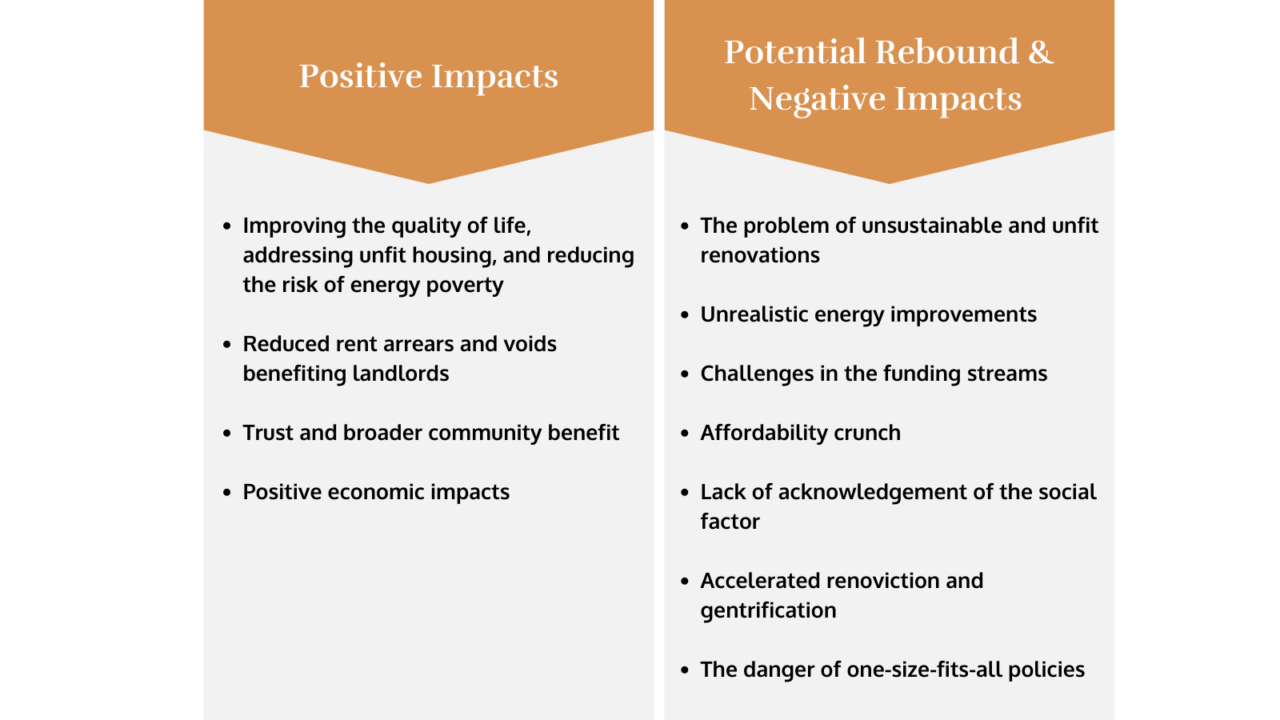[15.12.22] Highlights of lessons from a year of research on fuel poverty by FEANTSA: how to guarantee a socially fair renovation wave
A blog by Anousheh Parsaei, IEECP
How to guarantee a socially fair renovation wave – an online event bringing together those who fight energy poverty across Europe – was held on 6 December 2022. The event, organised by FEANTSA, gathered experts and policy makers from across Europe to discuss the link between energy poverty and unfit housing, while illuminating how to address it in the context of the Energy Performance of Buildings Directive (EPBD), Energy Efficiency Directive (EED), and Social Climate Fund (SCF). In this article, ENPOR will guide you through some highlights from this fruitful event.
On 6 December, FEANTSA- the European Federation of National Organisations Working with the Homeless, organised an event sharing lessons from a year of its research on fuel poverty. In this event, FEANTSA discussed a set of 6 reports recently launched with the cooperation of national experts in central, eastern, and southern Europe, to better understand the link between energy poverty and unfit housing, and how to address it in the context of the EPBD, EED and SCF. As the topic has a very close link to what ENPOR has been doing over the past few years, we are happy to walk you through some of the points addressed about the social impact of the green transition, in the context of housing. The report Energy Efficiency Renovation: Impact and Challenges in Greece (PDF) actually draws from ENPOR work.
Energy efficiency renovation has social impacts on households, sometimes positive such as improved living conditions: health, education, but also negative, with many case studies demonstrating that without social safeguards, renovation policies can lead to lack of affordability leading to gentrification and social exclusion. Therefore, if we decide to be strict from a technical point of view, we must also be strict in terms of social requirements and safeguards. To give a better insight into the positive and negative impacts of the green transition, have a look at the following figure.

Eventually, public policies should recognise the issues at stake and seek to plot and implement steps to develop the legislation. Below you can find the recommendations that FEANTSA proposed for public policies:
- Prioritise deep renovation in the least performing homes of the people living in energy poverty, including temporary accommodation (e.g. hotels, shelters, refuge accommodation, etc.)
- Revise the Energy Performance Certificates to include the living condition of the inhabitants. Also to consider housing as a social right and not an investment opportunity, with rent regulation.
- Design financial tools for the low-income (e.g. 100% grants, earmark the highest share of financial support, keep remaining costs close to 0), across the tenure spectrum (private rental sector, owner-occupied, social housing)
- Foster social and community housing to put people before profit
- Actively prevent renoviction (note 1) through rent caps and renoviction bans set by governments, and invest in understanding better the situation in the private rented sector
- Ensure the implementation and enforcement of the right to housing, presented in Article 31 of the European Social Charter, include legal representation and more social impact indicators
- Think beyond the building sector because a sustainable approach supposes horizontal participation and inclusiveness of diverse parties. It also links up all sectors and policy areas, from regulation, building regulation, taxation, environmental and energy policies, and social policies
- Empower local level to deliver on environmental objectives with a positive social impact, and all levels should ensure NECPs (National Energy and Climate Plans) recognize and address the challenges
- Recognize technical challenges (e.g. socially fair decarbonization of heating in rural areas, district heating, historical buildings, advance planning based on a building’ lifecycle approach)
However, there are some specificities for countries in CEE countries – Central, Eastern, and Southern Europe which need to be taken into consideration such as:
- An ageing housing stock
- Sometimes institutional gaps make delivery more complicated
- High energy poverty rates, set to increase considerably with cost-of-living crisis
There is, therefore, no one-size-fits all to put green and social justice at the centre. It is also key to bear in mind the tools for short-term challenges too.
Access event recording: here
The reports can be found on:
- How to avoid a Renoviction Wave, Report on the social impacts of the Renovation Wave (PDF) (Overview report)
- Renovictions in Europe, briefing (PDF)
- Social Justice and More Ambitious Energy Performance Requirements in the Post-Socialist Context (PDF)
- Increasing Energy Standards and Unfit Housing: Cases, Solutions and Dilemmas (PDF)
- Energy Efficiency Renovation: Impact and Challenges in Greece (PDF)
- Renoviction in the Context of Energy Efficiency Investments in the Former Socialist Countries of the EU (PDF)
(Note 1) Some retrofitting policies and programmes, far from increasing living standards and making more quality affordable housing available, lead to home eviction and push the most vulnerable households to the edges of society. This phenomenon is known as “renoviction”.
